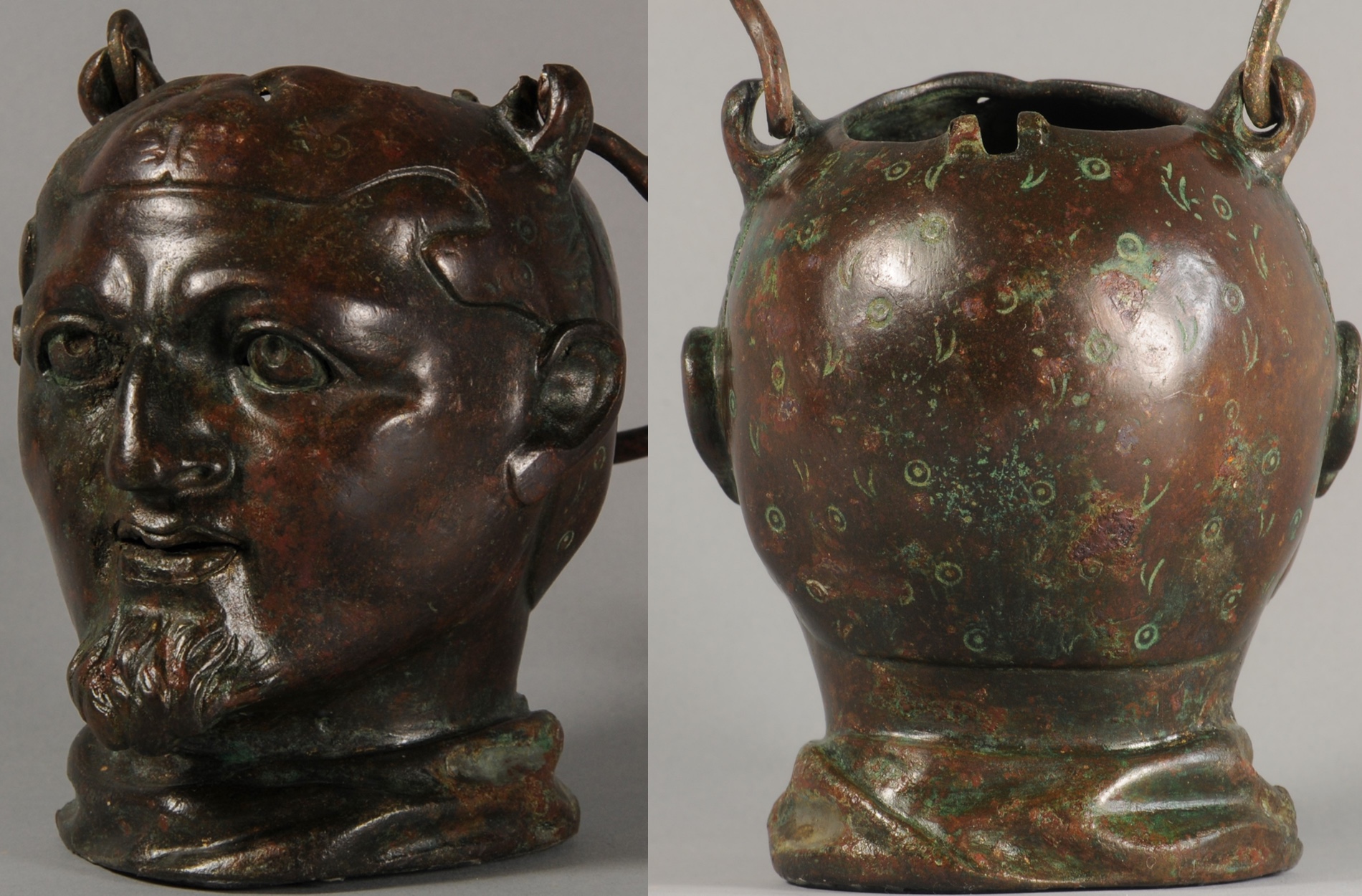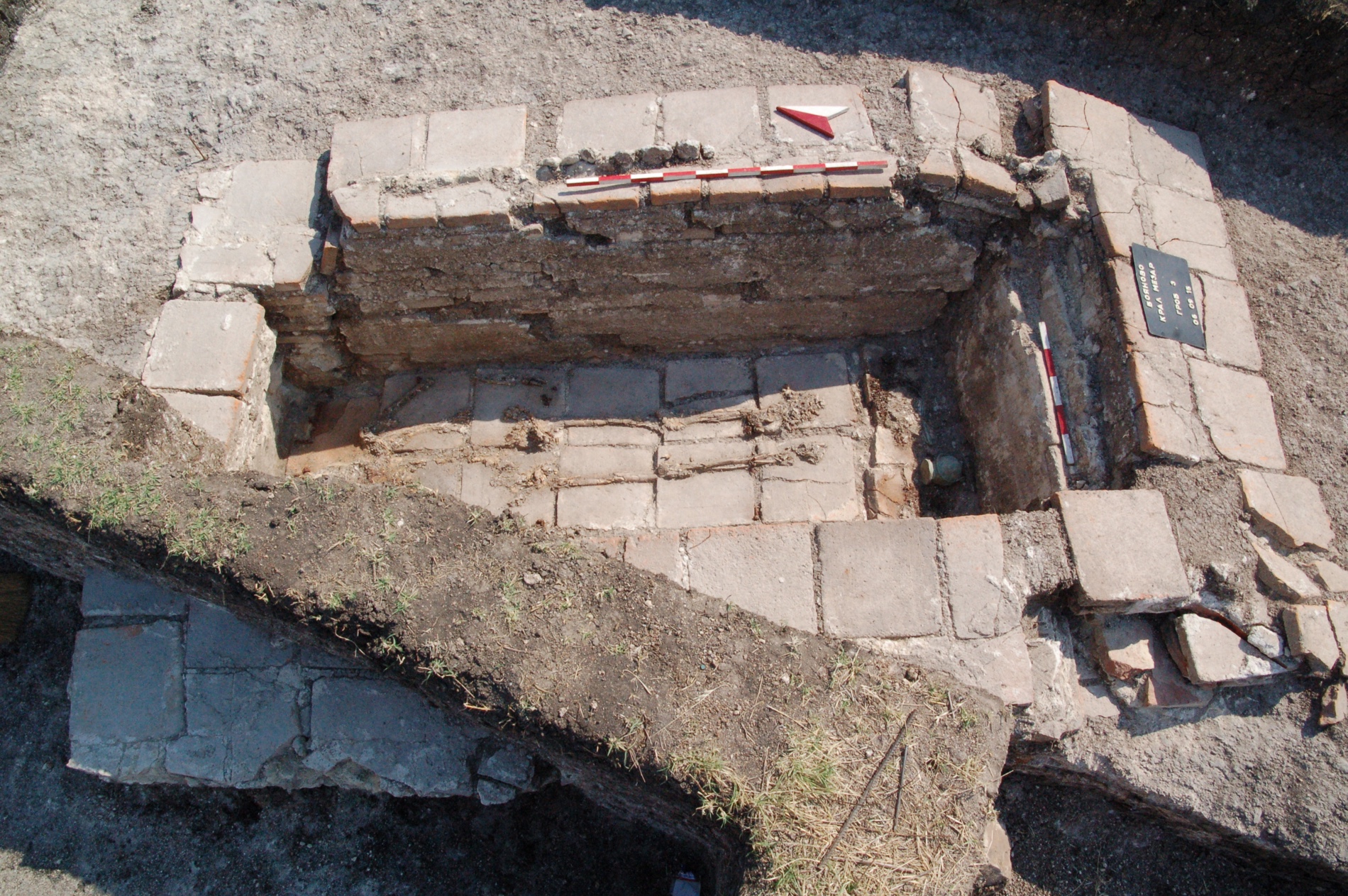Skeleton of Ancient Sports Fan and Head-Shaped Jar Found in Bulgarian Grave
The man depicted on the jar had a broken nose and was likely an ancient Thracian wrestler.

The skeleton of an ancient sports fan was discovered alongside an 1,800-year-old jar shaped like the head of a wrestler or boxer who may have had his nose broken, archaeologists reported.
The "spectacular" balsamarium — a jar used to store liquids such as balm or perfumes — was found in a grave in southeastern Bulgaria (ancient Thrace).
It dates to a time when the Roman Empire controlled Thrace — an ancient area that encompassed parts of Bulgaria, Greece and Turkey.
Related: Photos: Gladiators of the Roman Empire
Made of brass, the balsamarium depicts a man with a goatee and a nose that looks crooked or bent as if it had been broken and not fully healed. The man is wearing a cap made from the skin of a feline, likely a panther or leopard, the archaeologists wrote in a paper published in the October issue of the American Journal of Archaeology.

Examples of balsamariums that have similar features, such as a crooked or bent nose, have been found elsewhere in the Roman Empire and are often interpreted as depicting boxers or wrestlers.
The feline cap worn by the man may be an allusion to a Nemean lion, a creature that the Greek god Hercules fought and defeated, according to ancient mythology.
Sign up for the Live Science daily newsletter now
Get the world’s most fascinating discoveries delivered straight to your inbox.
"It is probable that the representation of the athlete's cap as the skin of a savage feline was meant to suggest the athlete's similarity to Hercules and, in this way, to signify the heroic power and courage possessed by the athlete," the archaeologists wrote in their paper.
Sports fan

The skeleton that was also found in the grave belonged to a man who died when he was about 35 to 40 years old. Also buried with the remains, the team found a blade used to scrape sweat and dirt from the skin.
Related: Spartacus - History of a Thracian Gladiator
"In our opinion, the grave belongs to a Thracian aristocrat, who has practiced sport in his everyday life, rather than to a professional athlete," Daniela Agre, an archaeologist at the National Archaeological Institute with Museum at the Bulgarian Academy of Sciences, who led archaeological work at the site, told Live Science.
The man's grave is part of a larger burial complex that was found within a 9.8-foot-high (3 meters) burial mound called a tumulus.
"We think that the tumulus was used as a family necropolis and the deceased was a part of this family," Agre said. Excavations were carried out at the tumulus in 2015.
- In Photos: Ancient Gladiator School Discovered, Recreated
- The 25 Most Mysterious Archaeological Finds on Earth
- In Photos: Ancient Roman Fort Discovered
Originally published on Live Science.

Owen Jarus is a regular contributor to Live Science who writes about archaeology and humans' past. He has also written for The Independent (UK), The Canadian Press (CP) and The Associated Press (AP), among others. Owen has a bachelor of arts degree from the University of Toronto and a journalism degree from Ryerson University.









